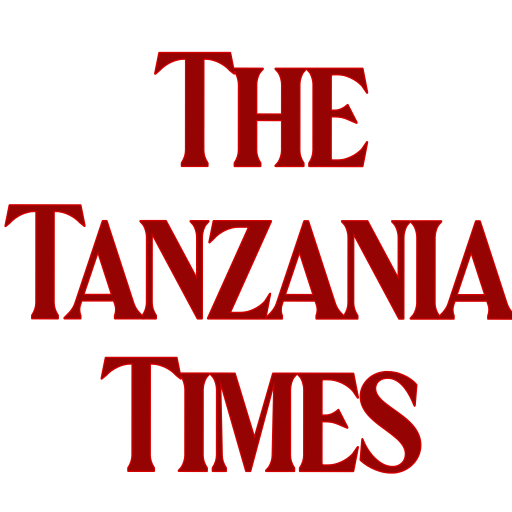Top Five World Economies have recognized the important role being played by the Maasai and other Indigenous communities such as the Barbaig and Hadza Bushmen, in protecting natural environment. They have awarded them US $1.7 Billion to rekindle such efforts.
Norway, Germany, the Netherlands, United States and the United Kingdom, in partnership with 17 other funders, have jointly pledged to invest US $1.7 billion to help Indigenous and local communities conserve the biodiversity of tropical forests that are vital to protecting the planet from climate change, biodiversity loss, and pandemic risk.
Their joint announcement was made during the high-level World Leaders Summit at COP26 in Glasgow, Scotland.
“We are demonstrating our commitment today by announcing an initial, collective pledge of US $1.7 billion of financing, from 2021 to 2025, to support advancement of Indigenous Peoples’ and local communities’ forest tenure rights and greater recognition and rewards for their role as guardians of forests and nature,” says a statement from the donors, calling on others to add their support as well.
Indigenous Peoples and local communities manage half the world’s land and care for an astonishing 80 Percent of Earth’s biodiversity, primarily under customary tenure arrangements.
In Tanzania, the Maasai and Barbaig Pastoralists, the Hadza Hunters and Fruit Gatherers are listed among the Indigenous communities that have helped maintain the world’s biodiversity. But the grants also apply to other indigenous people across the African Continent.

Recent studies however, show that Indigenous communities and organizations receive less than One Percent of the climate funding meant to reduce deforestation.
They hold the best carbon capture technology the planet has to offer—The forests! The Hadza, Maasai and Barbaig together with other Indigenous communities worldwide protect the world’s largest tracts of forests in Tanzania, Africa, Indonesia, and Latin America, representing 35 million forest communities.
Ford Foundation
“This pledge signals our commitment to protecting the world’s tropical forests and those who live in them,” said Lord Goldsmith, Minister of State for Pacific and the Environment.
“The evidence is overwhelming that Indigenous Peoples and local communities are forests’ most effective guardians, often in the face of acute danger, and so they should be at the heart of nature-based solutions to the climate emergency.
COP26
By investing in tropical forest communities and expanding their communal rights, we will also tackle poverty, pollution, and pandemics.”
Among the philanthropic groups joining the new pledge at a critical moment for addressing the climate crisis are the Ford Foundation, Children’s Investment Fund Foundation, the Christensen Fund, David and Lucile Packard Foundation.
Others are Sobrato Philanthropies, Good Energies Foundation, Oak Foundation, William and Flora Hewlett Foundation, and, as part of the Protecting our Planet Challenge members, Arcadia, Bezos Earth Fund, Bloomberg Philanthropies, Gordon and Betty Moore Foundation, Nia Tero, Rainforest Trust, Re:wild, Rob and Melani Walton Foundation and the Wyss Foundation.
For years, only about US $270 million of climate finance has been dedicated to forest protection each year, yet the Indigenous Peoples and local communities that protect the world’s forests directly receive only US $46 million.
Ford Foundation’s Press Officer, Marc Climaco said the governments and funders hope to take a first step toward correcting an unjust system that has failed to favor communities that have the knowledge and capacity to outperform most other forest managers.
Researchers suggest that forests can contribute as much as 37 Percent toward climate mitigation goals that governments committed to in the 2015 Paris Agreement.
Protecting forests, which harbor precious biodiversity, also helps to prevent encounters with wildlife that can encourage the spill over of potentially dangerous pathogens into human populations.
A growing body of evidence shows that Indigenous Peoples are the most effective guardians of biodiverse tropical forests, which are increasingly under siege; UN experts recently urged climate negotiators at COP26 to respond with urgency to the destruction of precious ecosystems.
And yet the evidence, including a new study released in October, suggests the urgent need to scale up solutions to combat the destruction of tropical forests.
Report
In a comprehensive analysis of progress on a global commitment to protect forests, the authors called for recognizing and securing the rights of Indigenous Peoples and local communities and for making the communities “central to setting goals and priorities for forest activities.”
“There is no viable solution to the climate crisis without forest and land management by Indigenous Peoples and local communities who have proven that they are the best guardians of the world’s forests,” said Darren Walker, president of the Ford Foundation.
“This historic US $1.7 billion pledge is a challenge to all funders to do far more to support and partner with Indigenous Peoples and local communities who hold a key solution to climate change, and have them lead the way.”
In a statement signed by philanthropic and government leaders the funders promised “to further recognize and advance the forest and nature stewardship role of Indigenous Peoples and local communities, in partnership with governments and other stakeholders, with a particular focus on strengthening land tenure systems and protecting the tenure and resource rights of Indigenous Peoples and local communities.”
The statement goes on to commit the signatories “to prioritize the inclusion of Indigenous Peoples and local communities in decision-making and in the design and implementation of relevant programs and finance instruments, recognizing the interests of vulnerable and marginalized groups including women and girls, people with disabilities, and youth.”
Report
African people who are ‘indigenous’ include hunter-gatherers, pastoralists as well as some small-scale farmers, who practice different cultures, have different social institutions and observe different religious systems.
The Pygmies of the Great Lakes Region, the San of southern Africa, the Hadzabe of Tanzania and the Ogiek, Sengwer and Yakuu of Kenya can all be mentioned as examples of hunter-gatherer communities.
Pastoralist communities include the Maasai (Kenya and Tanzania) the Pokot (Kenya and Uganda), the Barabaig of Tanzania, the Samburu, Turkana, Rendille, Endorois and Borana of Kenya, the Karamojong of Uganda, the Himba of Namibia and the Tuareg, Fulani and Toubou of Mali, Burkina Faso and Niger.


